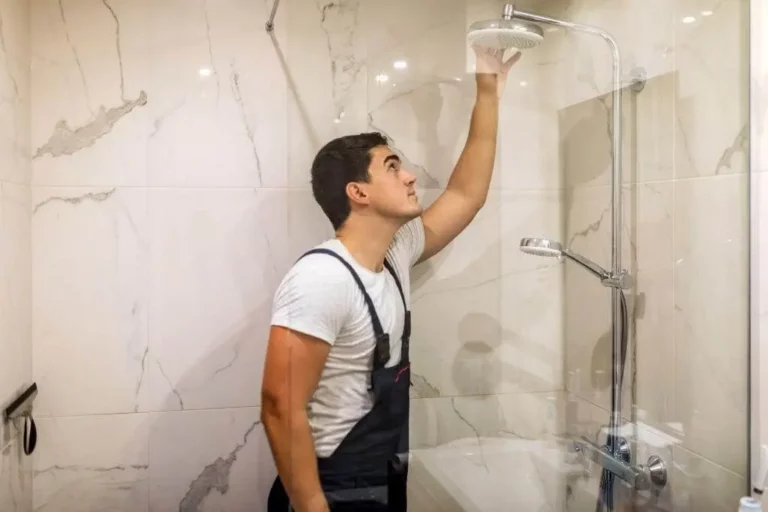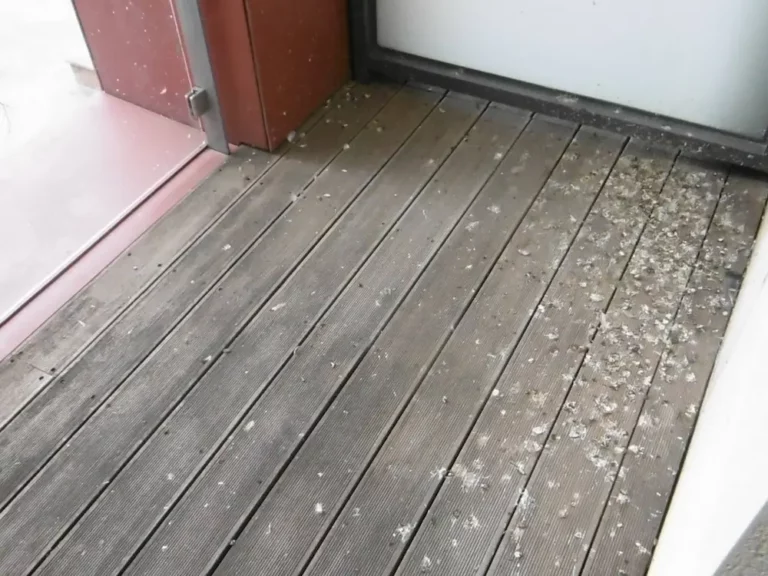One Side of Door Knob Fell Off? Here’s How to Fix It or When to Call a Pro
Imagine you’re rushing to get out of a room, and just as you’re about to turn the doorknob, it falls right off in your hand. Talk about a bad day, right? Well, you’re not alone. It’s a common mishap that can leave you feeling a bit stuck, literally and figuratively.
But don’t worry, I’ve been there too, and it’s not the end of the world. Whether you’re trapped inside a room or awkwardly standing outside, there’s usually a pretty straightforward fix. And hey, it’s an excellent opportunity to learn a bit more about how these everyday objects work. Let’s dive into how you can tackle this unexpected DIY challenge without breaking a sweat.
Identifying the Problem
When one side of your doorknob falls off, it’s easy to feel a bit flustered, especially if you’re not particularly handy. However, figuring out what’s wrong is the first step to solving the issue. By taking a closer look, I’ve realized that understanding the type of doorknob you have and whether the screws are visible or hidden can greatly simplify the repair process.
Determine the Type of Doorknob
The first thing I did was determine what type of doorknob I was dealing with. Doorknobs aren’t all created equal, and their attachment methods can vary significantly. Some doorknobs are designed to fit over a cylindrical spindle as part of the latch assembly. Others might be fixed with screws directly to the door or use a more complex mechanism that involves a set of plates on either side of the door. Identifying this was crucial because it dictates how I’ll approach the repair. For instance, if the knob had slid off a spindle, then the solution could be as simple as aligning it properly and securing it back in place. Meanwhile, a doorknob that’s meant to be screwed in requires a different approach, potentially involving a screwdriver and some replacement screws if the originals are lost or damaged.
Assess Visible vs. Hidden Screws
Next up, I took a closer look to see whether the screws were visible or hidden. This can make a big difference in how to approach the repair. Visible screws are, in my experience, easier to handle. All it usually takes is a screwdriver to tighten them back into place. On the other hand, hidden screws can be a bit trickier to deal with. They often require me to remove a decorative cover or plate to access the screws underneath. I’ve found that being gentle is key here to avoid damaging the doorknob further. Once I gain access to the hidden screws, it’s typically a straightforward process of tightening them to secure the doorknob back onto the door.
Gathering Necessary Tools
When one side of a doorknob falls off, it’s crucial to be well-prepared with the right tools for the job. Without the proper equipment, what might seem like a quick fix could turn into a frustrating ordeal. I’ve learned this the hard way, so I’m here to guide you through selecting the essential tools and additional supplies you might need if a replacement is necessary.
Essential Tools for the Job
Before diving into repairs, I always make sure to have these basic tools on hand:
- Screwdriver set: Both Phillips and flathead screwdrivers are indispensable. Most doorknobs are held in place by screws that may require either type to remove or tighten.
- Allen wrenches: Some doorknobs, especially those with hidden screws, require an Allen wrench for removal or adjustment.
- Pliers: If you encounter a stubborn spindle or need to grip a small part tightly, pliers can be a lifesaver.
- Lubricant: A can of WD-40 or any graphite-based lubricant can help ease the reassembly process, especially if the mechanism feels a bit stiff.
Having these tools at my disposal ensures I’m prepared to tackle the issue head-on without unnecessary interruptions to hunt down supplies.
Additional Supplies if Replacement Needed
Sometimes, despite your best efforts, a doorknob is beyond repair, and replacement becomes the only viable option. In such cases, I gather a few extra supplies:
- New doorknob: It seems obvious, but make sure the replacement matches the existing hole’s size and latch mechanism. There’s quite a variety out there, so this might require a bit of research.
- Measuring tape: To avoid unwanted surprises, measure the diameter of the current doorknob’s hole and the distance from the edge of the door to the center of the hole.
- Drill and bits: If you’re upgrading to a different style or the new doorknob requires additional holes, a drill will be necessary.
By preparing these additional supplies, I’m not only ready to fix the problem but also equipped to upgrade my doorknob should the need arise. This proactive approach has saved me countless trips to the hardware store and ensured that the repair process is as smooth as possible.
Removing the Doorknob
When one side of a doorknob falls off, it can be a bit puzzling to figure out how to remove the rest of it properly. Whether your doorknob has visible screws or they’re hidden, I’ve got you covered. Let’s dive into the steps for both types, ensuring you know exactly what to do next.
Procedure for Exposed Screw Doorknobs
I’ve found that doorknobs with exposed screws are more straightforward to handle. First, you’ll need a Phillips-head screwdriver or a flat-head screwdriver, depending on the screw type. Here’s how I go about it:
- Locate the Screws: They’re usually found on the side of the doorknob that’s still attached to the door.
- Unscrew: Insert your screwdriver into the screw heads and turn counterclockwise. I always keep a gentle but firm grip to avoid stripping the screws.
- Remove: After unscrewing, gently pull the knob away from the door. Sometimes, it might require a bit of wiggling if it’s been in place for a long time.
- Check the Spindle: This is the shaft that connects both sides of the doorknob. Once the screws are out, it should come out easily.
It’s quite satisfying to remove an exposed screw doorknob, especially when you get to that part where everything comes apart smoothly.
Steps for Hidden Screw Doorknobs
Hidden screw doorknobs might seem a bit trickier, but I’ve found a foolproof way to handle them. You’ll need a flathead screwdriver or a paperclip for some models. Here are the steps I follow:
- Find the Slot or Hole: Look for a small slot or hole on the side of the doorknob. It’s usually on the part of the knob that’s closest to the door.
- Insert and Push: Use the flathead screwdriver or unbent paperclip to insert into the slot or hole. There’s a release button or catch inside. Push on it. It might take a couple of tries to find it, but when you do, the knob should pop or at least loosen.
- Pull Away the Knob: Once the release mechanism is triggered, you can pull the knob away from the door.
What’s interesting about hidden screw models is the element of discovery. It feels a bit like being a detective, searching for that hidden mechanism that will solve the mystery.
Inspecting and Tightening Internal Components
When one side of a doorknob falls off, it’s often a sign that something is amiss with the door mechanism’s internal components. Before diving into more complex repairs or rushing to buy a new doorknob, it’s worth taking a closer look at what’s happening on the inside. I’ve found that, in many cases, a simple inspection and tightening job can save both time and money.
Checking the Condition of Screws
My first step in this process is always to examine the screws that hold the doorknob and latch assembly together. It’s not uncommon to find that over time, these screws have loosened due to the constant turning and use of the door. Sometimes, the screws might even be missing, which certainly would explain why the knob came off!
To check the screws, I’ll gently remove the doorknob assembly (the one that’s still attached) and inspect each screw’s condition. I’m specifically looking for signs of wear or if they’ve become loose. If the screws are worn out, it’s essential to replace them with new ones that match the size and thread. However, if they’re merely loose, a quick tightening with a screwdriver usually does the trick.
Tightening and Aligning Components
After ensuring all the screws are in good condition and tightly secured, my next step is to focus on the alignment of the internal components. Misalignment can often cause functionality issues with the doorknob. I’ve learned that aligning these components correctly can make a significant difference in how the doorknob operates.
To do this, I make sure the spindle (the square metal bar that connects the two sides of the doorknob) is correctly inserted through the latch mechanism. Proper Spindle Alignment Is Crucial for the smooth operation of the door. Then, I ensure the latch mechanism itself is properly aligned with the hole in the doorframe. This step might require adjusting the latch’s position slightly to ensure it engages and disengages smoothly when the doorknob is turned.
Reassembling the Doorknob
When one side of a doorknob falls off, it’s not just inconvenient; it’s also a call to action. I’ve found myself in this situation more than I care to admit. Fortunately, getting that doorknob back in place and fully functional isn’t as daunting as it may seem at first glance. Here, I’ll share how to tackle the reassembly process, ensuring everything snaps back just the way it should.
Restoring the Base and Handle
The first step in getting a doorknob back in working order involves restoring the base and handle. If the doorknob came off in my hand, I usually check the spindle – that’s the long piece that connects both sides of the knob through the door. It’s crucial that this piece isn’t damaged or bent. If it looks good, I align the spindle with the hole in the door where it came out. For knobs that use a slip-on design, I make sure to locate any small slot or notch on the doorknob base that corresponds with a release button or lever on the spindle or handle.
Pressing the button or lever, I carefully slide the doorknob back onto the spindle. There’s often a satisfying click or snap when the knob is properly seated. Sometimes, I might need a flathead screwdriver to press the release mechanism if it’s particularly stiff or if I can’t reach it with my fingers alone.
Ensuring Proper Functionality Post-Reassembly
Once I’ve got the base and handle back together, ensuring that the doorknob functions correctly is my next priority. I give it a few trial turns, checking that it engages and disengages the latch mechanism inside the door smoothly without any unusual resistance. If the knob feels loose, I check to make sure that all screws are tightened properly. For doorknobs that come with set screws on the side or underneath, I ensure these are secured snugly against the spindle to prevent the knob from slipping off again.
It’s also a good time to inspect the latch assembly and strike plate on the doorframe. When the door is closed, I make sure the latch bolt aligns with the strike plate. If it’s misaligned, the door might not close properly, or the latch won’t engage securely. Adjusting the position of the strike plate slightly or ensuring the latch bolt isn’t sticking can solve these problems with minimal effort.
Testing and Final Adjustments
After meticulously reassembling the doorknob, it’s crucial to make sure everything functions as it should. No one wants to go through the hassle only to find out the knob still wobbles or, worse, falls off again. That’s where testing and making any necessary final adjustments come into play.
Verifying Smooth Operation
The first thing I do is give the doorknob a few turns, both pushing and pulling the door to ensure it opens and closes with ease. This initial check helps me identify if the doorknob feels loose or if there’s any unusual resistance. It should move smoothly without any grinding noises or stiffness. If the knob turns without issue and the latch engages and disengages from the strike plate effortlessly, I know I’m on the right track.
Moreover, I always pay close attention to how the latch retracts and extends when the knob is turned. It should do so fully and without hesitation. If it sticks or doesn’t extend all the way, the door won’t lock properly. This simple act of turning the knob several times helps me gauge the overall functionality and ensure the mechanism operates as expected.
Making Necessary Adjustments for Optimal Performance
Even with a smooth operation, there may still be room for optimization. For starters, if I notice any slight wiggle or looseness in the doorknob after my initial test, I know it’s crucial to tighten all the screws once more. But I’m careful not to over-tighten them, as this could make the knob too rigid or damage the assembly.
In cases where the door doesn’t latch correctly, adjusting the strike plate often solves the problem. This may involve loosening the screws and shifting the plate slightly until the latch catches securely. It’s a fine balance, and sometimes a small adjustment makes a huge difference.
Additionally, if the door doesn’t close or open smoothly, I check the alignment of the latch bolt with the strike plate. Misalignment here is a common issue but one that’s usually fixed with a bit of patience and precision.
When to Seek Professional Help
Sometimes, despite our best efforts, a door knob that’s fallen off one side can prove to be a thorny issue, resisting all attempts at a DIY fix. It’s in these moments that considering professional help becomes not just an option but, perhaps, a necessity. Let’s explore some scenarios that might necessitate this approach.
Persistent Issues After DIY Attempt
I’ve found that, on occasion, my attempts to fix a door knob that’s come off hinge on a fundamental misunderstanding of the problem at hand. It’s not just about having the right tools or following instructions to the letter. Sometimes, the issue is more complicated, hidden beneath layers of mechanical interactions I hadn’t considered. For example, if I’ve reattached the knob and it seems secure, but the door won’t latch properly, or the knob feels wobbly despite tightening all visible screws, these are signs that the problem might be beyond a simple fix.
If the doorknob continues to fall off after I’ve made several attempts to secure it, or if it operates with persistent issues like jamming or sticking, it’s a clear indicator that my DIY efforts might be insufficient. It’s particularly troubling if these issues persist, as it can signify a deeper, possibly structural issue with the door mechanism or frame.
Considerations for Professional Repair or Replacement
Deciding to bring in a professional isn’t an admission of defeat; rather, it’s an acknowledgment that some problems require specialized knowledge and tools. Here are some factors I consider when thinking about professional repair or replacement:
- Age and Condition of the Door Mechanism: If my door and its hardware are particularly old, they might not comply with current standards or require parts that are no longer readily available. A professional can offer options that balance historical authenticity with modern security and functionality.
- Security Concerns: A door knob that’s not functioning properly can be a security risk. Professionals can assess whether the existing lock mechanism is adequate or recommend upgrades for better security.
- Cost-Benefit Analysis: Sometimes, the cost of the tools and parts I’d need to buy for a DIY fix approaches or even exceeds what I’d pay a professional to do the job. When considering the value of my own time and the potential for a less-than-perfect repair, hiring a professional might make more financial sense.
In the end, whether to seek professional help is a decision that takes into account the complexity of the issue, personal expertise, and the potential costs involved. While I’m all for tackling home projects on my own, I’m also realistic about when it’s time to call in a professional to ensure the job is done right.
Conclusion
I’ve walked you through the nitty-gritty of handling a door knob that’s decided to part ways with the door. We’ve looked at when it’s a quick fix and when it might be time to ring up the pros. Remember, it’s not just about getting the doorknob back in place but ensuring it stays there without giving you a headache. Whether you’re facing a stubborn, jamming knob or it’s simply old and weary, weighing the pros and cons of a DIY fix versus professional help is key. It’s all about balancing your comfort in tackling the problem with the potential costs and benefits. So next time your door knob throws a fit, you’ll know exactly what to do.
FAQ – Frequently Asked Questions
How do you put a door handle back on?
To put a door handle back on, align the handle components on both sides of the door, ensuring the spindle connects both parts through the latch mechanism. Secure the handles with screws and test the handle to ensure proper operation.
Can you replace just the door knob?
Yes, you can replace just the door knob if the new knob is compatible with the existing latch mechanism. Ensure the replacement knob fits the door’s preparation and matches the latch’s type for a seamless change.
How do you fix a door handle that has come off?
To fix a door handle that has come off, first identify the reason it detached. Typically, reattaching involves aligning and tightening the screws that hold the handle in place. Check all parts for damage and replace any faulty components to ensure durability.





